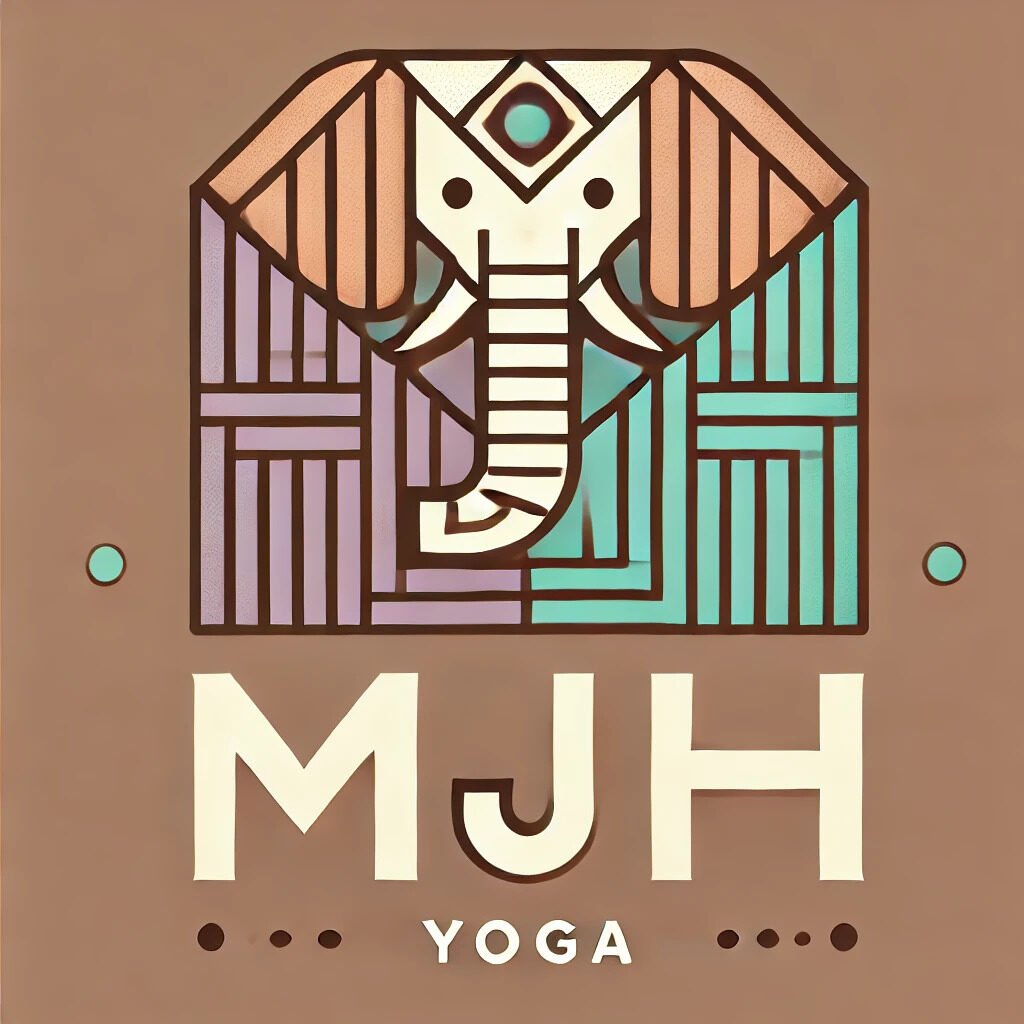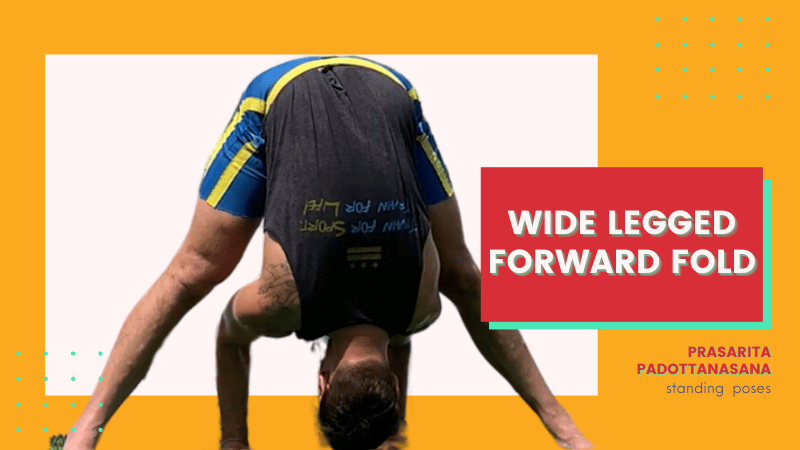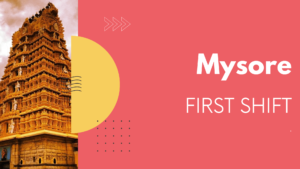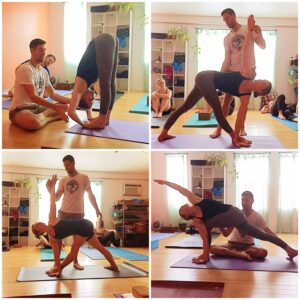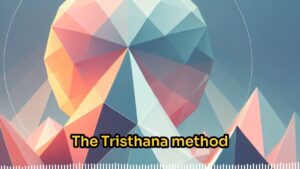Uncomplicate Prasarita Padottanasana A-D
This is the most confusing count most folks run into, bar none. The series of poses known as Prasarita Padottanasana A-D, also known as the Spread Feet Intense Stretch Pose, are also a great entryway to researching how we distribute weight, how we establish foundation, and how we draw the energy into the central channel of the body.
This group of symmetrical standing poses not only activates and stretches both sides of the body equally, but it acts as a window into our own physical disparities, helping us to identify areas that may need extra attention for flexibility and strength.
In this blog, we will explore the significance of the movements in each variation of Prasarita Padottanasana and how understanding the count can enhance your experience on the mat. For those looking for a structured approach to the transitions, I encourage you to refer to the detailed counting structure on this resource.
| PRASARITA PADOTTANASANA A (5 MOVEMENTS) | ||
| 1 | EXAM | Inhale, open to the right, hands to waist |
| 2 | DVE | Exhale, fold forward, hands on the floor |
| Inhale, look up, lengthen | ||
| 3 | TRINI | Exhale, and fold head down. |
| 4 | CATVARI | Inhale, look up, lengthen |
| Exhale. | ||
| 5 | PANCA | Inhale, up |
PRASARITA PADOTTANASANA B (4 MOVEMENTS) | ||
| 1 | EKAM | Inhale, arms out |
| 2 | DVE | Exhale, hands to waist |
| Inhale. | ||
| 3 | TRINI | Exhale, fold. |
| 4 | CATVARI | Inhale, up |
| Exhale | ||
PRASARITA PADOTTANASANA C (4 MOVEMENTS) | ||
| 1 | EKAM | Inhale, arms out |
| 2 | DVE | Exhale, hands behind |
| Inhale. | ||
| 3 | TRINI | Fold. |
| 4 | CATVARI | Inhale, up |
| Exhale | ||
PRASARITA PÁDOTTANASANA D (5 MOVEMENTS) | ||
| 1 | EKAM | Exhale, fold your head down |
| 2 | DVE | Exhale, fold forward, hold big toes |
| Inhale, look up, lengthen | ||
| 3 | TRINI | Exhale, fold head down |
| 4 | CATVARI | Inhale, look up, lengthen |
| Exhale | ||
| 5 | PANCA | Inhale, up |
| Exhale, Samasthiti | ||
Anatomy
PRASARITA PADOTTANASANA
SPREAD FEET INTENSE-STRETCH POSE
Sculptor Frederick Wellington Ruckstull said, “Everything in nature folds at evening.” Life is filled with opposing forces: inhalation and exhalation, waking and sleeping, or tension and relaxation. In yoga, these dualities manifest beautifully, especially around sequencing. We often begin with poses that open the front of the body and then transition into folds that draw our energy inward. After the standing series, moving into Prasarita Padottanasana allows us to relax while experiencing inversion—a gentle yet powerful way to shift our nervous system from ‘fight or flight’ to ‘rest and digest.’
Understanding the anatomy of Prasarita Padottanasana reveals the interplay between our muscles and joints. This pose invites us to triangulate our focus on specific areas, such as the hamstrings and the erector spinae. By flexing the trunk forward and extending the knees, we create a dynamic stretch that furthers our journey toward balance. Each movement calls for active engagement and awareness, reminding us that stability begins in our foundation—our feet.
BASIC JOINT POSITIONS
- The feet are parallel.
- The knees extend.
- The trunk flexes.
- The elbows flex.
- The shoulders flex forward, adduct, and depress.
Synergizing/Activating
- The hips are bent by the psoas, pectineus, and rectus femoris muscles at the front of the thigh.
- The quadriceps muscles along the front of the thighs straighten the knees.
- The tibialis anterior muscles along the front of the shin turn the feet in slightly.
- The tibialis posterior muscles help lift the arches.
- The flexor hallucis longii presses the toes against the floor for stability.
- The rectus abdominis muscle flows from chest to pubis, aiding in trunk flexion.
- The lower section of the trapezius draws the shoulders away from the ears, freeing the neck.
- The deltoids lift shoulders; biceps bend elbows when fixed to the mat.
- Wrist and finger flexors stabilize the pose by pressing the hands into the floor.
Preparation
Begin with hands on hips and feet spread wide. Activate the quadriceps to straighten the knees, using cues like “lifting the kneecaps.” As you flex forward, pay attention to how your trunk engages deeply into the pose. Engage your hip flexors and abdominal muscles to squeeze your torso against your thighs, ensuring proper alignment as you press your hands onto the mat. This foundational preparation sets the tone for safely exiting the pose.
Prasarita Padottanasana is not merely about getting into the pose; it’s a complex dance of engagement and release, of tension and ease. With every count, every breath, we cultivate awareness and precision that not only enhances our practice but deepens our connection to ourselves. Through the power of the count, we ground our practice in a rhythmic flow, allowing Ashtanga Yoga to be an ever-evolving journey towards both physical and spiritual balance.
